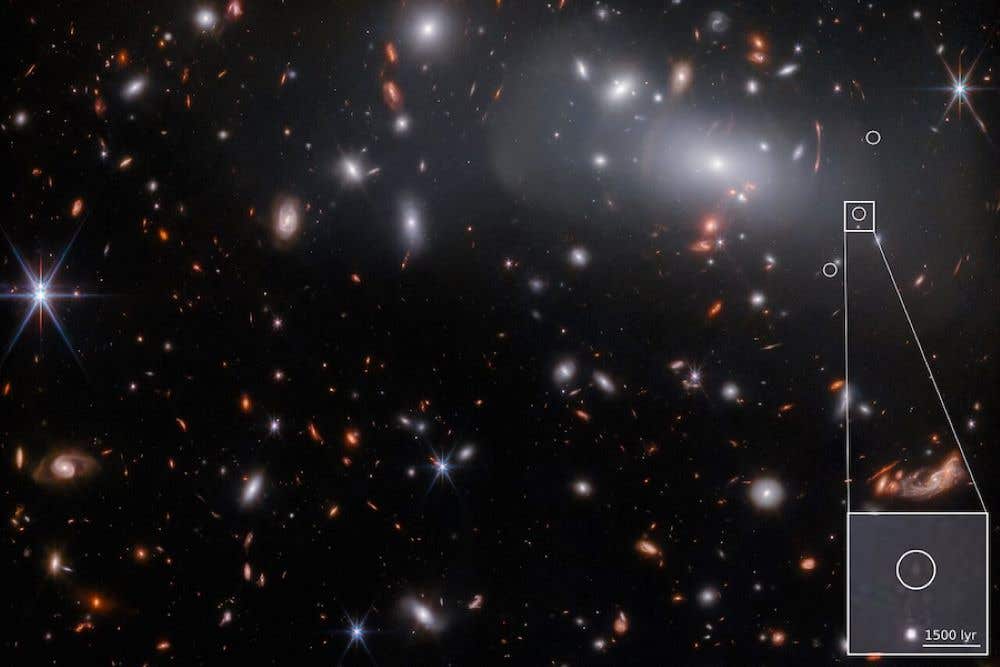Scientists find tiny but very bright galaxy using James Webb Space Telescope
The findings could help astronomers learn more about galaxies that were present shortly after the Bing Bang.

Your support helps us to tell the story
From reproductive rights to climate change to Big Tech, The Independent is on the ground when the story is developing. Whether it's investigating the financials of Elon Musk's pro-Trump PAC or producing our latest documentary, 'The A Word', which shines a light on the American women fighting for reproductive rights, we know how important it is to parse out the facts from the messaging.
At such a critical moment in US history, we need reporters on the ground. Your donation allows us to keep sending journalists to speak to both sides of the story.
The Independent is trusted by Americans across the entire political spectrum. And unlike many other quality news outlets, we choose not to lock Americans out of our reporting and analysis with paywalls. We believe quality journalism should be available to everyone, paid for by those who can afford it.
Your support makes all the difference.Researchers have discovered a tiny galaxy with big star power using the James Webb Space Telescope (JWST).
The galaxy is the smallest ever discovered at this distance – about 500 million years after the Big Bang.
Using first-of-their-kind observations from the telescope, researchers looked more than 13 billion years into the past to discover a unique, minuscule galaxy that generated new stars at an extremely high rate for its size.
The findings could help astronomers learn more about galaxies that were present shortly after the universe came into existence.
This galaxy is far beyond the reach of all telescopes except the James Webb, and these first-of-their-kind observations of the distant galaxy are spectacular
Patrick Kelly, senior author of the paper and an assistant professor in the University of Minnesota School of Physics and Astronomy, said: “This galaxy is far beyond the reach of all telescopes except the James Webb, and these first-of-their-kind observations of the distant galaxy are spectacular.
“Here, we’re able to see most of the way back to the Big Bang, and we’ve never looked at galaxies when the universe was this young in this level of detail. The galaxy’s volume is roughly a millionth of the Milky Way’s, but we can see that it’s still forming the same numbers of stars each year.”
The University of Minnesota researchers were one of the first teams to study a distant galaxy using JWST, and their findings will be among the first ever published.
The telescope can observe a wide enough field to image an entire galaxy cluster at once.
Researchers were able to find and study this new galaxy because of a phenomenon called gravitational lensing – where mass, such as that in a galaxy or galaxy cluster, bends and magnifies light.
According to the study, a galaxy cluster lens caused this small background galaxy to appear 20 times brighter than it would if the cluster were not magnifying its light.
Studying galaxies that were present when the universe was this much younger can help scientists answer questions astronomers have about its history.
Hayley Williams, first author on the paper and a PhD student at the Minnesota Institute for Astrophysics, said: “The galaxies that existed when the universe was in its infancy are very different from what we see in the nearby universe now.
“This discovery can help us learn more about the characteristics of those first galaxies, how they differ from nearby galaxies, and how the earlier galaxies formed.”
The findings are published in the Science journal.